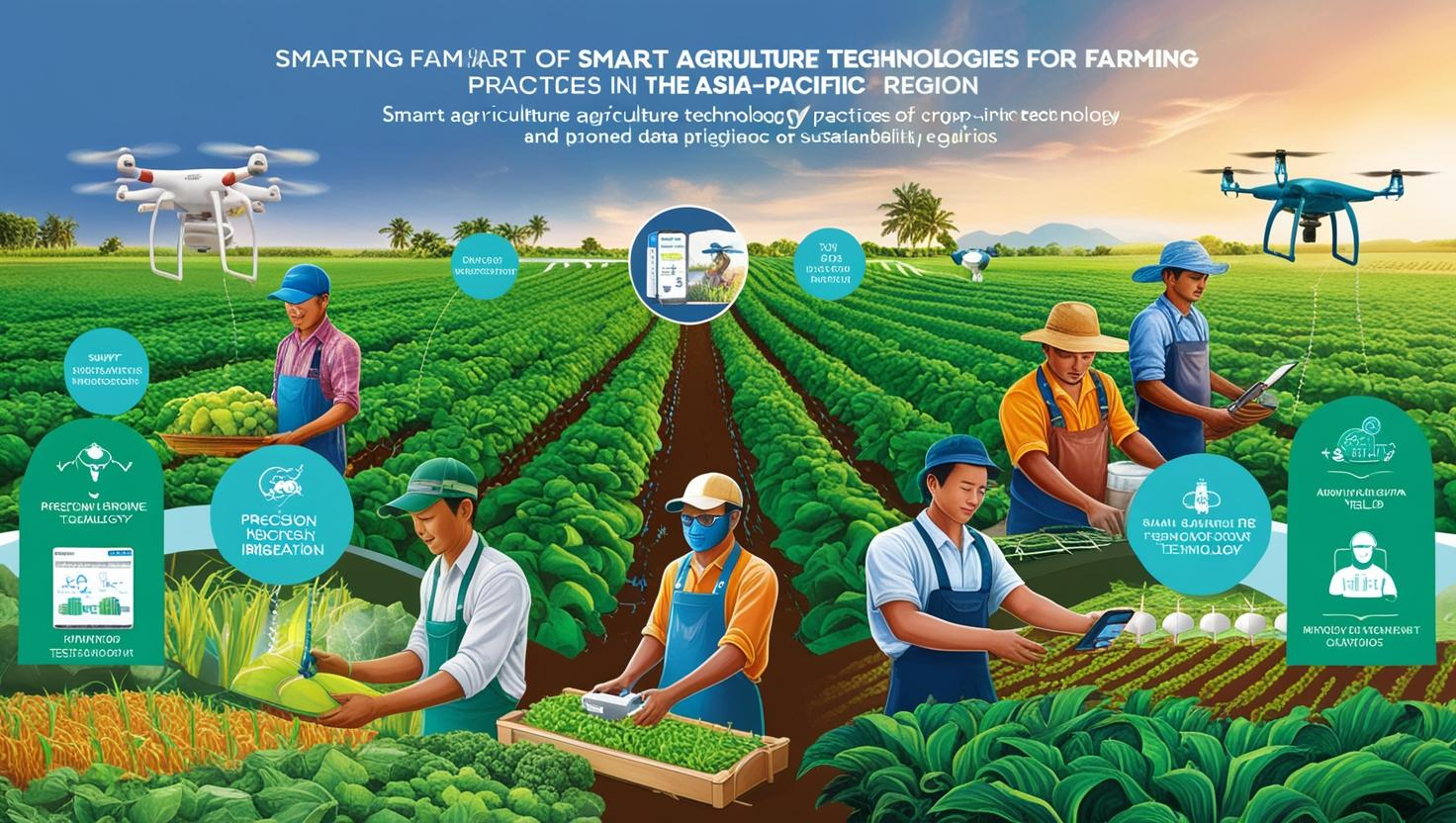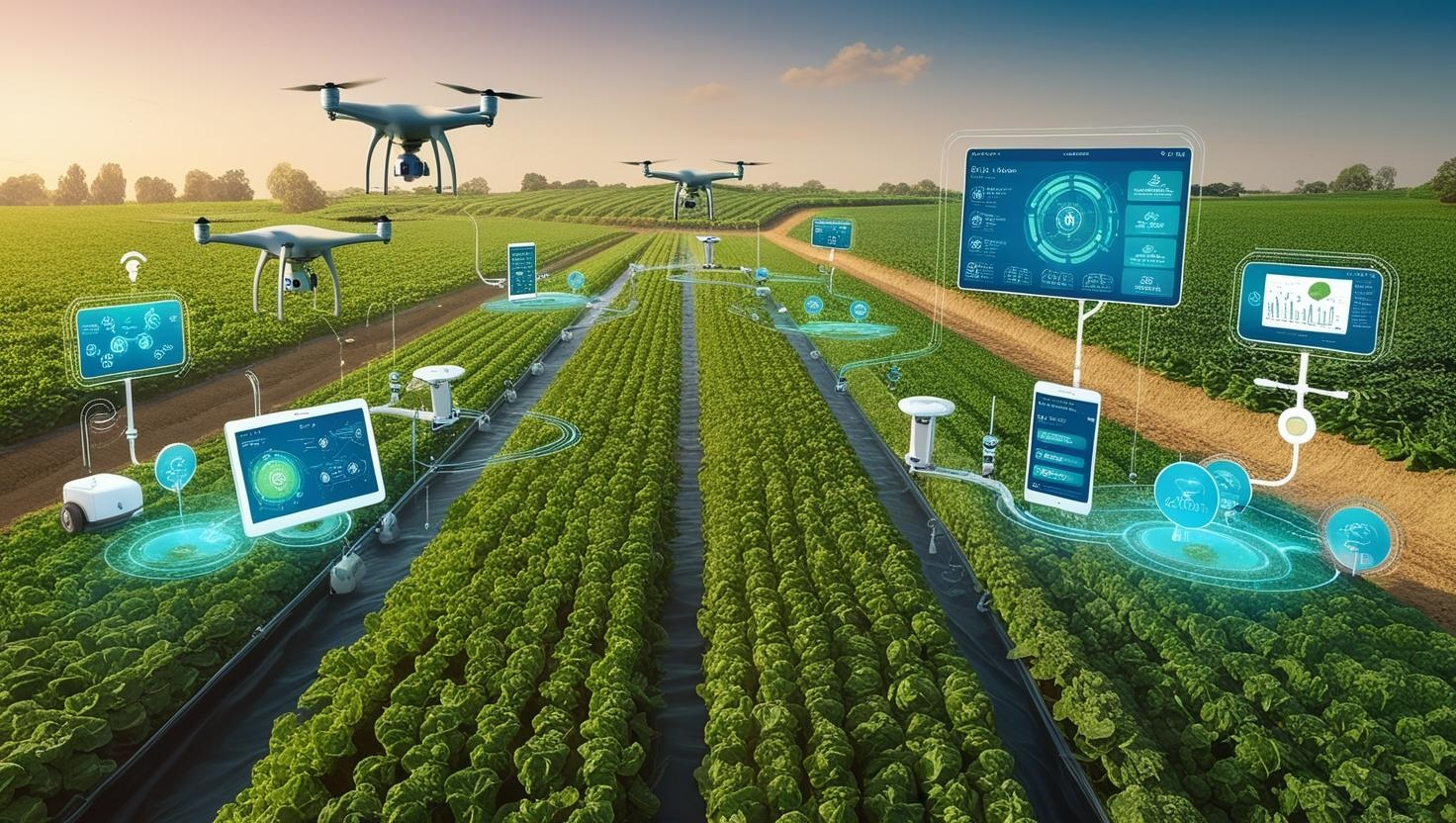How Smart Agriculture Market is Transforming Farming in Asia Pacific
The Asia Pacific region is experiencing a major transformation in the agricultural sector with the adoption of smart farming technologies. As the demand for food continues to rise due to population growth, the need for sustainable and efficient agricultural practices has become more urgent. Smart agriculture, which integrates advanced technologies such as IoT, AI, robotics, and data analytics, is emerging as a game-changer for farmers across the region. Countries like China, India, Japan, and Australia are leading the way in implementing innovative solutions to enhance productivity, reduce resource wastage, and optimize crop yields. The future of smart agriculture in Asia Pacific looks promising as governments, agritech startups, and major corporations collaborate to drive digitalization in farming.
Growing Demand for Precision Farming
One of the most significant trends shaping the future of smart agriculture in Asia Pacific is precision farming. This approach involves the use of sensors, drones, and GPS-enabled equipment to monitor soil conditions, crop health, and environmental factors in real time. By analyzing data collected from the fields, farmers can make informed decisions regarding irrigation, fertilization, and pest control. Precision farming not only improves efficiency but also minimizes the overuse of chemicals and water, making agriculture more sustainable. Countries like Japan and Australia have already adopted precision farming techniques on a large scale, while nations like India and China are rapidly catching up with government-backed initiatives and private sector investments.
Download PDF Brochure for Info @ https://www.marketsandmarkets.com/pdfdownloadNew.asp?id=239736790

Role of IoT and AI in Smart Farming
The Internet of Things (IoT) and Artificial Intelligence (AI) are revolutionizing agriculture in Asia Pacific by providing real-time insights and automation. IoT-powered sensors are being deployed across farmlands to collect data on temperature, humidity, soil moisture, and weather conditions. AI-driven analytics then process this data to provide actionable recommendations for farmers. Machine learning algorithms can predict disease outbreaks, optimize irrigation schedules, and even recommend the best time for harvesting. In countries like China, AI-driven agricultural platforms are gaining popularity, helping farmers increase productivity while reducing operational costs. The integration of AI with robotics is also paving the way for automated farming solutions, reducing dependency on manual labor and addressing labor shortages in rural areas.
Expansion of Vertical and Indoor Farming
As urbanization continues to accelerate in Asia Pacific, the availability of arable land is shrinking. This has led to the rise of vertical and indoor farming as sustainable alternatives to traditional agriculture. Vertical farming utilizes stacked layers of crops grown in controlled environments using hydroponic or aeroponic systems. This method conserves water, reduces pesticide use, and allows year-round cultivation regardless of climatic conditions. Countries like Singapore, Japan, and South Korea have embraced vertical farming to enhance food security and reduce dependency on food imports. With advancements in LED lighting, climate control systems, and automation, the future of vertical farming in Asia Pacific looks highly promising.
Government Initiatives and Investments in Agritech
Governments across Asia Pacific are recognizing the potential of smart agriculture and are actively promoting its adoption through subsidies, research funding, and policy support. China, for instance, has launched its "Digital Agriculture and Rural Development" strategy to modernize farming practices through technology integration. India’s “Digital Agriculture Mission” aims to empower farmers with digital tools for better productivity and income generation. Australia is investing heavily in agricultural research and technology to strengthen its agribusiness sector. Additionally, countries like Japan and South Korea are fostering collaborations between agritech startups and established agricultural players to accelerate innovation in the sector.
Impact of Climate Change and the Need for Sustainable Farming
Climate change is posing significant challenges for agriculture in the Asia Pacific region, with rising temperatures, erratic rainfall patterns, and increased frequency of extreme weather events. Smart agriculture presents a viable solution to mitigate these risks through climate-resilient farming practices. Automated irrigation systems, AI-driven weather forecasting, and drought-resistant crop varieties are being developed to combat the adverse effects of climate change. The adoption of smart greenhouses, which regulate temperature and humidity levels, is also gaining traction in countries prone to harsh climatic conditions. As climate uncertainties continue to threaten food security, smart agriculture will play a crucial role in ensuring sustainable farming practices for future generations.
Role of Agritech Startups and Innovations
The rise of agritech startups in Asia Pacific is accelerating the transformation of the agricultural sector. These startups are leveraging cutting-edge technologies to develop innovative solutions for farmers, ranging from AI-powered farm management software to autonomous drones for crop monitoring. India has emerged as a hub for agritech startups, with companies focusing on precision farming, supply chain optimization, and digital marketplaces for farmers. China’s rapid advancements in robotics and automation are also driving innovation in smart farming. The increasing interest from venture capital firms and investors in agritech startups indicates strong growth potential for the sector in the coming years.

Challenges in Adoption of Smart Agriculture
Despite the promising future, the adoption of smart agriculture in Asia Pacific faces several challenges. High initial costs of technology implementation remain a major barrier, especially for small and medium-scale farmers. Many rural areas lack the necessary digital infrastructure and internet connectivity required for IoT-based farming solutions. Additionally, there is a need for extensive training and awareness programs to help farmers understand and utilize advanced agricultural technologies effectively. Addressing these challenges will require coordinated efforts from governments, private sector players, and research institutions to ensure the widespread adoption of smart farming practices across the region.
Future Outlook for Smart Agriculture Market in Asia Pacific
The future of smart agriculture market in Asia Pacific is poised for remarkable growth as technological advancements continue to reshape the industry. With increasing investments in research and development, coupled with supportive government policies, smart farming is expected to become mainstream in the coming years. The integration of 5G technology will further enhance real-time monitoring and automation, making agricultural operations more efficient and data-driven. The expansion of AI-powered predictive analytics will help farmers optimize resources and reduce production risks. As sustainability becomes a top priority, eco-friendly farming techniques such as regenerative agriculture and carbon-neutral farming will gain traction.
Asia Pacific is set to become a global leader in smart agriculture, with innovations that can serve as a model for other regions. The collaboration between technology firms, agribusinesses, and policymakers will be instrumental in driving the adoption of digital farming solutions. As challenges are addressed and technological barriers are overcome, smart agriculture will play a vital role in ensuring food security, increasing farm productivity, and promoting sustainable agricultural practices across the region.
The smart agriculture market in Asia Pacific is evolving at an unprecedented pace, driven by advancements in IoT, AI, robotics, and data analytics. With rising food demand, climate challenges, and the need for efficient resource utilization, the adoption of smart farming technologies is no longer a choice but a necessity. Precision farming, vertical agriculture, and AI-driven automation are shaping the future of agriculture in the region, promising higher yields, sustainability, and resilience against climate uncertainties. While challenges remain in terms of cost and accessibility, continued investments and policy support will accelerate the growth of smart agriculture, making it a defining force in the future of food production in Asia Pacific.
80% of the Forbes Global 2000 B2B companies rely on MarketsandMarkets to identify growth opportunities in emerging technologies and use cases that will have a positive revenue impact.
- Leading Automated Guided Vehicle Companies 2024: An In-depth Analysis
- CHARGED UP: SHIFT TO E-MOBILITY AND THE EVOLUTION OF TRANSPORTATION
- Global Automotive Market: Predictions For 2024
- Revolutionizing Depot Charging: Hockey Stick Growth on the Cards
- The Future of Silicon Battery Industry: Innovations and Market Outlook


